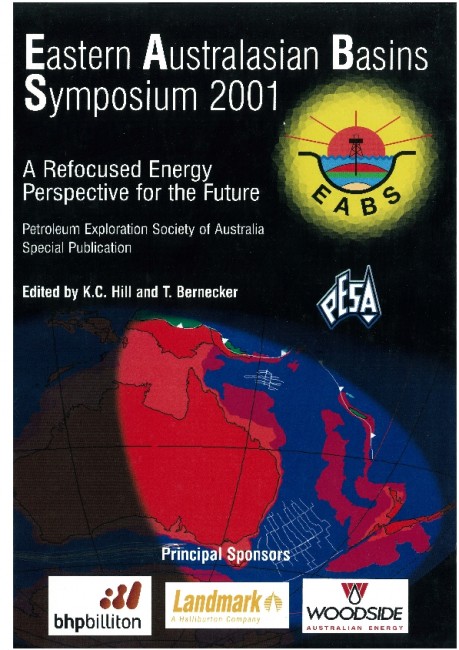Publication Name: Eastern Australian Basins Symposium 2001
Authors: G. Chen, K.C. Hill, N. Hoffman and G.W. O'Brien
Date Published: November 2001
Number of Pages: 31
Reference Type: Magazine Article
Abstract:
To determine the hydrocarbon migration paths into a trap, it is necessary to know the 3D structural architecture of the reservoir horizon(s) and the extent of the source rock horizon(s) at the time(s) of hydrocarbon generation and expulsion. In 3DMove?, individual layers can be stripped off, fault and fold structures can be restored, and the sediments decompacted. The new top surface at time X is then flattened for analysis of source maturity, as temperature gradients are calculated from the sea floor. Applying realistic temperature gradients, the extent of the generating oil kitchen can be identified for that time. To determine the geometry of the reservo ir at time X the new surface horizon is projected onto its palaeo-bathymetry to restore the palaeo-geometries of the reservoir and source kitchen. Superimposing the kitchen on the reservoir geometry, updip migration paths can be plotted for that time along the carrier bed. Faults can be allowed to either seal or leak, as appropriate. The process can be repeated for any time, showing the changing patterns of migration paths from the generating source kitchen to the reservoir through time.Although now being applied to Bass Strait, this method has only been tested in the Timor Sea where the Swan Graben and Cartier Trough are the main source kitchens with Miocene and Eocene hydrocarbon migration. Stripping off the top layers of the 3D-depth model, it was restored and decompacted to the latest Miocene and latest Eocene palaeo-bathymetries. Assuming regional palae-temperature gradient of -40?C/km, the migration paths from the restored source kitchens were determined, confirming that the Jabiru, Challis, Cassini, East Swan,
Swan, Puffin and Skua traps were favourably located in terms of oil migration. Moreover areas that remain uncharged were revealed.


